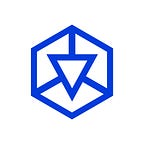Cardano is a third-generation blockchain network named after Gerolamo Cardano, a 16th-century Italian polymath. It aims to overcome the shortcomings of early generation cryptos. Bitcoin and Ethereum’s opportunities on scalability, interoperability and energy efficiency are some of the examples.
The chain is entirely developed on scientific and mathematical concepts from cryptography and engineering experts. It is designed to be a dynamic, sustainable, and scalable platform for running smart contracts. It will also ease the development of a wide range of DeFi apps, new crypto tokens, games, and other applications.
While most blockchains are focused on getting up and running as quickly as possible, Cardano’s approach is on scientific philosophy and peer-reviewed academic research. The network distinguishes itself from other blockchains by employing mathematical principles in its consensus method and employing a unique layered architecture.
Many people believe that Cardano is the next generation of cryptocurrency technologies. Additionally, the Ethereum team is also behind the Cardano network.
A brief history of Cardano
Ethereum co-founders Charles Hoskinson and Jeremy Wood launched the blockchain in September 2017. Charles first proposed Cardano in 2015.
Three groups are now in charge of the blockchain’s development:
- The Cardano Foundation is a non-profit organization. It is in charge of the network’s governance and development.
- EMURGO is a for-profit organization. It is in charge of commercializing Cardano.
- IOHK is a blockchain infrastructure company. It offers insights to build and maintain the network.
The ADA coin
ADA is the official cryptocurrency of the network. The coin took its name from Ada Lovelace. She is a 19th-century mathematician often referred to as the “world’s first computer programmer.” ADA ranks as the sixth largest crypto by market cap as of November 15, 2021.
ADA powers Cardano, like how ETH powers Ethereum. Both serve as payment for network fees. Validators can also stake ADA to preserve the network’s security and stability.
In the future, ADA will be a governance token. It will also allow holders to vote on improvements and upgrades to the platform.
Cardano’s Roadmap
The network is still in its early phases of development. Unlike most blockchains, Cardano’s team has developed it to be in a more modular fashion.
Its roadmap is divided into five stages. They are grouped into “eras” (or periods). Cardano’s team is working on each of these eras at the same time. Rather than a fixed timetable, each era resembles a development track.
I. Foundation — Byron Era
The network’s first phase is Byron. It was named after Lord Byron, a poet and Ada Lovelace’s father.
The era saw the birth of the network’s primary architecture. It also deployed the protocol’s fundamental capabilities. The protocol ensures the smooth operation of the network and its core technology.
In Byron, Cardano launched the Daedalus — IOHK’s official desktop wallet for ADA. Emurgo also launched a lightweight wallet called Yoroi. It enables efficient transaction processing for everyday use.
II. Decentralization — Shelley Era
The Shelley era brought a higher level of decentralization on the platform. It saw Cardano migrate away from the centralized Byron era. It worked toward a greater reliance on community-run nodes from the launch of Cardano’s mainnet. This era also introduced the delegation process and incentive plans.
III. Smart Contracts — Goguen Era
Goguen era introduced smart contracts to Cardano. Developers were allowed to build dApps using Plutus. Plutus is the blockchain’s smart contract development language.
The network also launched a multi-currency ledger during this era. The ledger made it easier to create new, natively compatible tokens.
IV. Scaling — Basho Era
Basho will involve the network’s scaling and new technologies. It aims to improve Cardano’s performance and stability.
The era will also introduce interoperable sidechains. These chains will significantly assist Cardano in handling larger throughput levels and parallel accounting methods. These updates will allow Cardano and its applications to be more interoperable with other blockchains.
V. Governance — Voltaire Era
Voltaire is Cardano’s final era. It aims to create an autonomous, decentralized network. It will hand over the control of Cardano’s future to the community. Instead of centralized institutions like the Cardano Foundation overseeing development and maintenance, the community will be entrusted with maintaining the network.
To promote its evolution into a full-fledged, self-sustaining, decentralized network, the community will take cues from Cardano’s treasury, voting, and delegation systems.
Closing thoughts
Cardano is an ambitious project. As with any big project, things don’t always go as planned. The team has missed many deadlines on its roadmap over the years. It has also adopted an intentionally slow approach which has forfeited the first-mover advantage it may have had.
But, the Cardano community has had a busy year in 2021. The network achieved several significant milestones. One of which is ADA’s all-time high in September 2021.
This once-underdog project has emerged as one of the most viable options to Ethereum and other third-generation PoS-based blockchains, which combine functionality from many blockchains into a single platform.
— -
Whether you have a question about our products, features, or anything else, our team is ready to answer all your questions. Please feel free to get in touch with us on our Telegram Community Chat.
TeraBlock official links:
